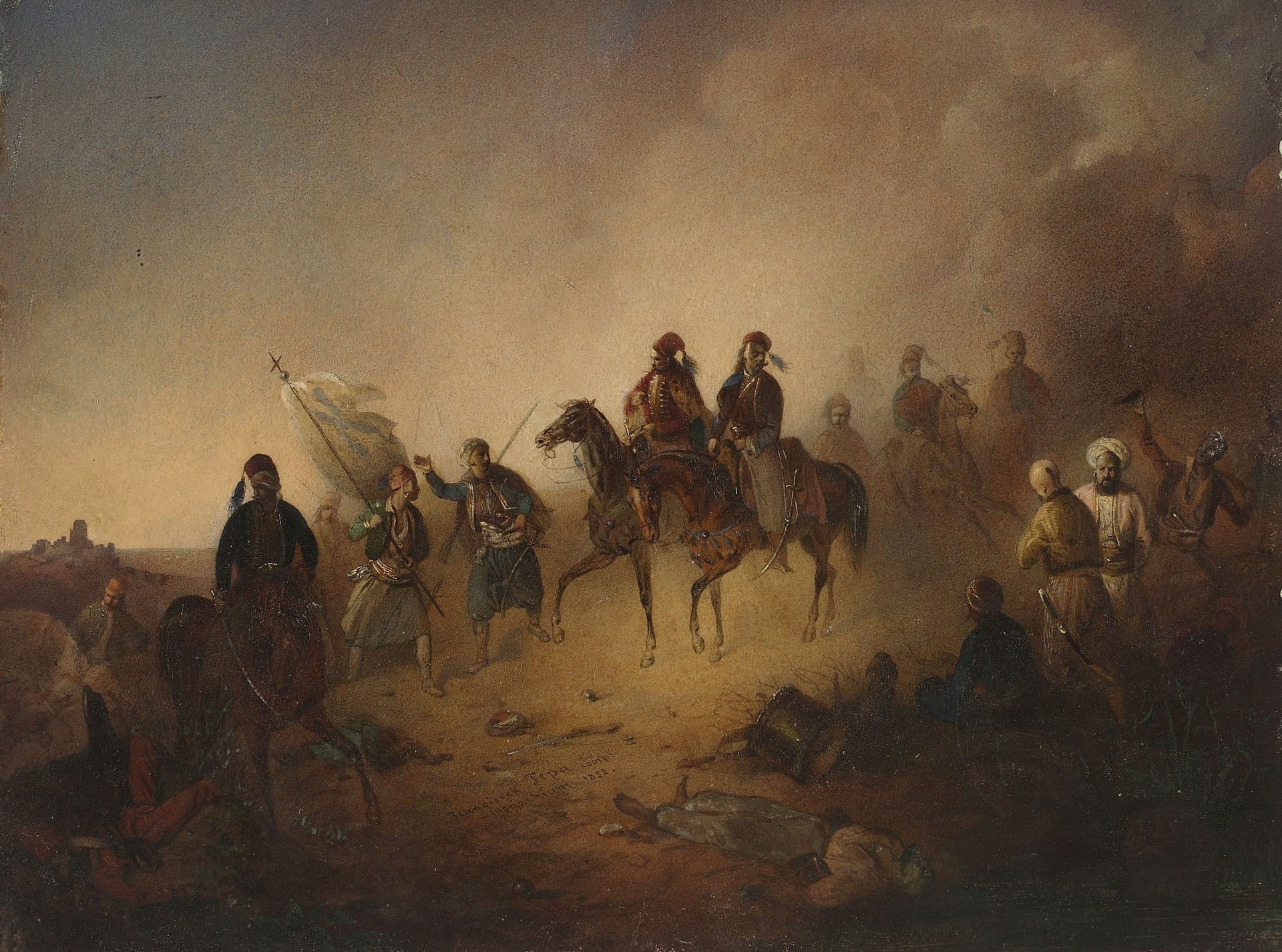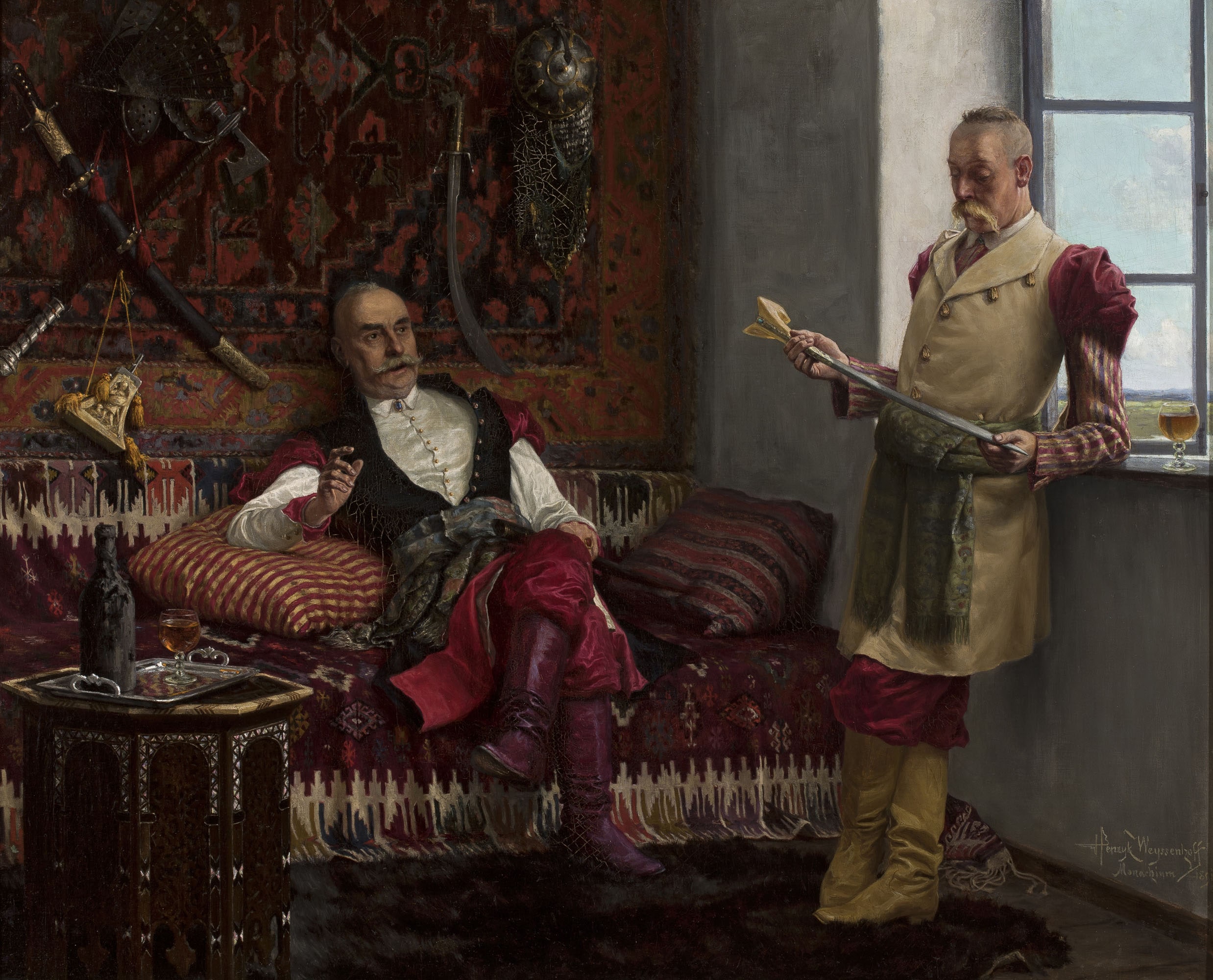09 January 2015

“Marcos Botsaris Captive Sultan Mahmud II of Kapernisi, August 8, 1823″, Franciszek Tepa, 1852. Watercolour, oil, varnish on Bristol Board.
The war fought by the Greeks to shake off the Turkish yoke was closely observed around Europe and, this being the era of romanticism, the events taking place around Greece between 1821 and 1832 became a symbol for national liberation struggle. Themes of this general sort were taken up in literature by the likes of Pushkin, Müller, Hölderlin, Hugo, Byron, and Shelley or, for the Poles, by Mickiewicz, Słowacki, Krasiński, Goszczyński, Morawski, or Rzewuski. As far as the visual arts are concerned, meanwhile, scenes from the Greek insurrection against the Ottomans were painted by Constantin Guys, Alexandre Gabriel Decamps, Prosper Marilhat, Ary Scheffer, and Eugène Delacroix. The Polish painter January Suchodolski distinguished himself with the striking Turkish Ship Burned by the Greeks (1839). One of Franciszek Tepa’s earliest historical compositions, meanwhile, depicted the spectacular victory at Karpenisi won by the small Greek detachment led by Marcos Botsaris (actually Marco Bozzari, 1788-1823) over an army of some 13,000 Turks commanded by sultan Mahmud II himself. Tepa depicted the moment in which Botsaris is riding triumphantly among the remains of the vanquished Turkish army, approaching the sultan, who is somewhat surprised at this awkward turn of events.
The previous literature has variously identified this painting as The Uprising in Macedonia, The Uprising in Bosnia, or Botsaris at Tripolis. The thorough familiarity with the realities of the Greek-Turkish wars –the topography, the costumes, and the facial features of the historic individuals shown– displayed by the young painter probably owes quite a lot to Tepa’s conscientious study of the paintings of Peter von Hess.
Tepa reprised the theme of Botsaris on two more occasions, painting two portraits of him –in watercolours and in oils– which he showed in Warsaw (1858) and in Krakow (1860). He also provided testimony to his heartfelt interest in the independence struggle of the Greeks in the form of his Self-Portrait in Greek Costume, a small watercolour dated at 30 July 1852 (now at the Jagiellonian Library in Krakow). Another Greek-themed piece by Tepa, The Fall of Missolunga, did not proceed beyond a sketch preserved at the Library of the Ukrainian Academy of Sciences in Lviv; it is possible that Tepa abandoned work on this composition in order to take up the invitation to join a travelling party heading East.
Anna Rudzinska

Henryk Weyssenhoff, author of landscapes, prints, and illustrations, devoted much of his creative energies to realistic vistas of Belorussia, Lithuania, and Samogitia. A descendant of an ancient noble family which moved east to the newly Polonised Inflanty in the 17th century, the young Henryk was raised to cherish Polish national traditions.

Over the years of 1864 through 1876, Stanisław Chlebowski served Sultan Abdülaziz in Istanbul as his court painter. As it was, Abdülaziz disposed of considerable artistic talents of his own, and he actively involved himself in Chlebowski’s creative process, suggesting ideas for compositions –such as ballistic pieces praising the victories of Turkish arms.
Tuesday - Saturday 10:00 - 19:00
Friday 10:00 - 22:00
Sunday 12:00 - 18:00
The museum is closed on Mondays.
On Wednesdays, the students can
visit the museum free of admission.
Full ticket: 300 TL
Discounted: 150 TL
Groups: 200 TL (minimum 10 people)